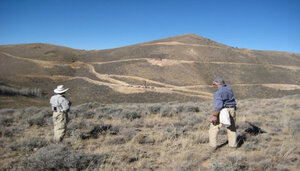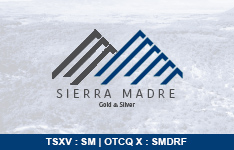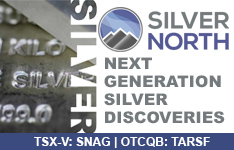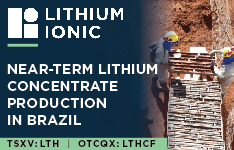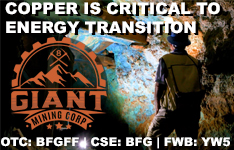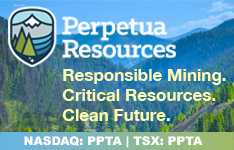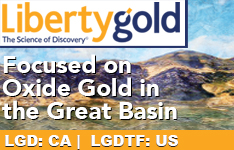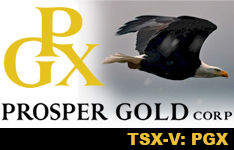If the adage, "history repeats itself," is valid then with each of the U.S. Federal Reserve's interest rate cuts expected in 2024 and 2025, gold will rally.
The consensus among analysts is the Fed will lower the rate another 50 basis points (50 bps) this year and another 100 bps next year, reported Frank Holmes with U.S. Global Investors.
Looking back to 1982, the time of the first U.S. easing cycle, defined as a move up or down 100 bps, "Fed rate cuts have generally been a bullish catalyst for gold prices, according to Forex.com. Gold has risen for one year following the first Fed rate cut of a new cycle in six of the seven cycles that occurred by 2020. This rise, on average, has been 11%.
Historically, the relationship between interest rates and gold prices, CBS News explained, has been inverse, with lower rates typically supporting higher gold prices.
As for the effects of a single 50 bps rate cut, the gold price appreciated an average of 8.5% in the six months afterward, as shown in data since 2020, Will Rhind, chief executive officer of investment company GraniteShares, told CBS News.
After about 4.5 years of no easing, the Federal Open Market Committee lowered short-term interest rates on Sept. 19 by 50 bps.
"The first rate cut from the Fed in a new cycle has, for the past 40 years, always sparked a gold rally, and this time was no different," wrote Adrian Day of Adrian Day Asset Management in his Q3/24 Portfolio Review.
During the day of the announcement, gold hit a new all-time high of US$2,625 per ounce (US$2,625/oz), reflecting a US$31/oz increase, reported Jim Rickards in the Crisis Trader. The yellow metal ended the day at $2,575/oz.
Two weeks later, Brien Lundin wrote in his Oct. 3 Gold Newsletter issue, "even after a few down days, we're still looking at a gain of well over US$150 (6.2%) over the past month and an eye-popping US$827 (45.3%) over the past year!"
Leading up to the rate cut, Lundin reported, investors began buying gold and selling the dollar as well as moving into gold-backed exchange-traded funds (ETFs) and gold mining stocks. Since the cut, flows into the SPDR Gold Shares ETF continue.
"Thus, the Fed pivot has been the biggest fundamental factor working in gold's favor," added Lundin. "This gold bull market has proven its mettle time and again, and there's a quiet confidence that nothing is going to stop this train."
Holmes highlighted in a Sept. 26 article that for the first time since 2022, the 50-day moving average for gold holdings has risen above its 200-day moving average, "a sign that the gold rally could be starting to gain serious traction among investors." He also wrote that "while gold is hitting new highs, the real story could be in the undervalued gold mining stocks that many investors have overlooked."
Just Last week Lundin purported that the precious metals mining sector must outperform gold for this bull market to be "full-fledged," or "duplicate the three previous secular gold bull markets (in the early 1970s, the late 1970s and the 2000s)," and this has not happened yet. Instead, gold equities now are significantly undervalued, presenting an "incredible" buying opportunity for investors.
He also purported that talk of the gold price reaching US$2,700 or US$3,000/oz is not outlandish. Rather, "these are the kinds of numbers that even the most storied Wall Street institutions are now predicting for the near future."
Among them is Goldman Sachs, forecasting US$2,900/oz gold by early 2025, resulting from a combination of lower global interest rates, greater central bank demand and the metal's hedging benefits, Business Insider reported.
Here are three gold companies that could benefit from an increase in gold price:
Thesis Gold Inc. (TAU:TSXV; THSGF:OTCQX; A3EP87:WKN)
This mineral explorer, headquartered in British Columbia, is unlocking the gold-silver potential of the province's Toodoggone district. The company recently released an updated preliminary economic assessment (PEA) encompassing its Lawyers and Ranch deposits, which according to Hannam & Partners Director of Mining Research Jonathan Guy, outlined "a materially more attractive project than Lawyers on a standalone basis." At the time, the investment bank raised its target price on Thesis 22%. The new target implies a 188% return on investment.
In his Sept. 6 report, Guy reported that compared to the previous, 2022, PEA, the mine life is two years longer, average production is 32% higher and the project economics are better. Using a US$1,930/oz gold price and a US$24/oz silver price, the net present value discounted at 5% (NPV5%) is US$1.3 billion, and the internal rate of return (IRR) is 35%. The new study includes an optimized mine plan as well.
Guy pointed out that an expansion of the Ranch resource could further enhance the combined deposit project. To grow the resource, Thesis Gold is drilling along the Thesis Corridor and at the Bonanza Ridge, Bonanza South, JK and BV deposits. Plus, there are nine targets that have not yet been drilled.
"We believe Ranch has the potential to ultimately be comparable to other large-scale, high-sulphidation epithermal systems and host a deposit several times larger than its current size," wrote Guy.
Ventum Capital Markets Analyst Philip Ker reported in his Sept. 5 report that the 2024 Lawyers Ranch PEA outlines an operation producing 3,000,000 ounces (3 Moz) of gold equivalent (Au eq) over a 14-year LOM at an all-in sustaining cost of US$1,013/oz of Au eq.
"Considering 3 Moz Au eq of recoverable ounces and a robust upfront mine plan, we see Thesis continuing its evolution of becoming a leading gold developer within the Canadian landscape and a rarity asset with greater than 5 Moz Au eq potential," Ker wrote.
He reiterated his Buy rating and his price target, now reflecting an 80% lift.
As for ownership of Thesis Gold, according to Reuters, four strategic entities own 1.79%, or 3.11 million (3.11M) shares. They are Director Nicholas Stadjuhar with 1.09% or 1.89M shares, President, Chief Executive Officer and Director Ewan Webster with 0.3% or 0.52M shares, Toby Pierce with 0.26% or 0.46M shares and Director Thomas Mumford with 0.14% or 0.24M shares.
Institutional ownership amounts to 32.81% or 57.11M shares. Of the total 13 institutional investors, the Top 3 are Van Eck Associates Corp. with 8.09% or 14.08M shares, Franklin Advisers Inc. with 7.96% or 13.86M shares and Merk Investments LLC with 7.58% or 13.2M shares.
Retail investors own the remaining 65.4% of Thesis.
In terms of structure, the company has 174.05M outstanding shares and 170.94M free float traded shares.
Its market cap is CA$110.87 million (CA$110.87M). Its 52-week range is CA$0.37−$1 per share.
NexGold Mining Corp. (NEXG.V:TSXV; NXGCF:OTCQX; TRC1.F:FRA)
Ontario, Canada-based NexGold was formed when Treasury Metals Inc. and Blackwolf Copper and Gold Ltd. merged in July, a transaction that "strengthened the leadership, balance sheet and capital markets capabilities, allowing it to execute a strategy to drill, develop and deal its way to become a midtier gold producer," Red Cloud Securities Analyst Ron Stewart wrote in his Sept. 6 initiation report.
The combined company now is advancing its Goliath gold complex, a 3 Moz, development-stage, open-pit and underground gold project in Ontario encompassing the Goliath and Goldlund-Miller properties, together spanning 34,719 hectares.
For an operation at Goliath, Red Cloud models it producing 1.176 Moz over a 13-year life of mine at an all-in sustaining cost of US$1,269/oz. This would result in an after-tax NPV5% of US$331M, an IRR of 21.2% and a payback period of 3.4 years.
"We anticipate this to be a starting point for NexGold," Stewart wrote. "We expect ongoing exploration at the Goliath gold project to have the potential to enhance the production profile and overall project economics."
NexGold also owns Niblack, an advanced copper-gold-zinc-silver volcanogenic massive sulphide project in Alaska and other prospective exploration properties: Hyder, in Alaska too, and Weebigee-Sandy Lake and Gold Rock, in Ontario.
Stewart has a Speculative Buy rating on NexGold and a price target reflecting a potential 125% return.
Regarding ownership, Reuters notes that 15 strategic entities own 12.17% or 9.28M shares of NexGold. The Top 3 are Frank Giustra with 6.23% or 4.75M shares, First Mining Gold Corp. with 5.07% or 3.87M shares and Director Andrew Bowering with 0.2% or 0.16M shares.
Six institutions together hold 15.81% or 12.05M shares. The three with the most shares are Extract Advisors LLC with 7.82% or 5.96M shares, Sprott Asset Management LP with 6.97% or 5.31M shares and Konwave AG with 0.53% or 0.41M shares.
Retail investors own the remaining 72.02% of NexGold.
The company's structure consists of 76.21M outstanding shares and 66.93M free float traded shares.
Its market cap is CA$45.16M. Its 52-week low and high are CA$0.46 and CA$1.07 per share.
Dakota Gold Corp. (DC:NYSE American)
South Dakota-based Dakota Gold Corp. is exploring Maitland and Richmond Hill, two gold projects at its 48,000-acre land package covering the direct northern extension of the historical Homestake mine that produced more than 40 Moz of gold during its 124 years in operation.
BMO Capital Markets initiated coverage on Dakota Gold on Sept. 6 with a Speculative Outperform rating and a target price implying 168% upside from the current share price.
"Dakota appears to have one of the crown jewels of exploration in its cross-hairs—it has made a high-grade discovery that could have scale," Mikitchook wrote in his initiation report, referencing the JB gold zone at Maitland.
The analyst described the JB gold zone as among the most notable new discoveries globally and the main valuation driver for Dakota Gold. He wrote, "The proximity and geological similarities to the long-running Homestake mine suggest potential for scale at the JB gold zone."
At its other project, Richmond Hill, Dakota Hill defined an initial oxide, near-surface gold resource analogous to that of Coeur Mining's nearby, operating Wharf open-pit, heap-leach mine.
"This asset could represent a near-term modest gold production opportunity that could generate cash flow to fund advancing the JB gold zone discovery," noted Mikitchook. The Unionville zone and undrilled targets at Richmond Hill "provide synergies to value creation at the JB gold zone and Richmond Hill oxides."
In terms of ownership of Dakota Gold, according to Reuters, 10 strategic entities own 20.71% or 19.4M shares. Of these, the Top 3 are Co-chairman Robert Quartermain with 7.9% or 7.4M shares, President, CEO and Director Jonathan Awde with 6.39% or 5.99M shares and Director and Chief Operating Officer Gerald Aberle with 4.54% or 4.25M shares.
Institutional ownership, divided among 113 companies, totals 40.98% or 38.38M shares. The Top 3 investors in this group are Orion Resource Partners (USA) LP with 9.62% or 9.01M shares, Fourth Sail Capital LP with 4.95% or 4.64M shares and BlackRock Institutional Trust Co. N.A. with 3.9% or 3.66M shares.
Retail investors hold the remaining 38.31% of Dakota Gold.
Structurally, the company has 93.66M outstanding shares and 65.25M free float traded shares.
Its market cap is US$209.8M. Its 52-week low and high are US$1.84 and US$3.25 per share.
| Want to be the first to know about interesting Gold investment ideas? Sign up to receive the FREE Streetwise Reports' newsletter. | Subscribe |


